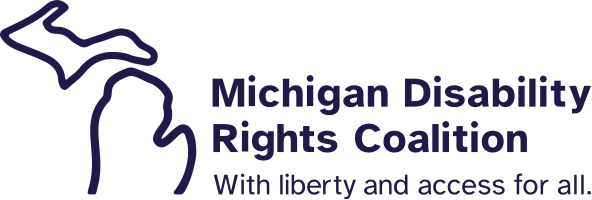“Pawsatively” Helpful: AT for Dog Care
Friday, June 8, 2018
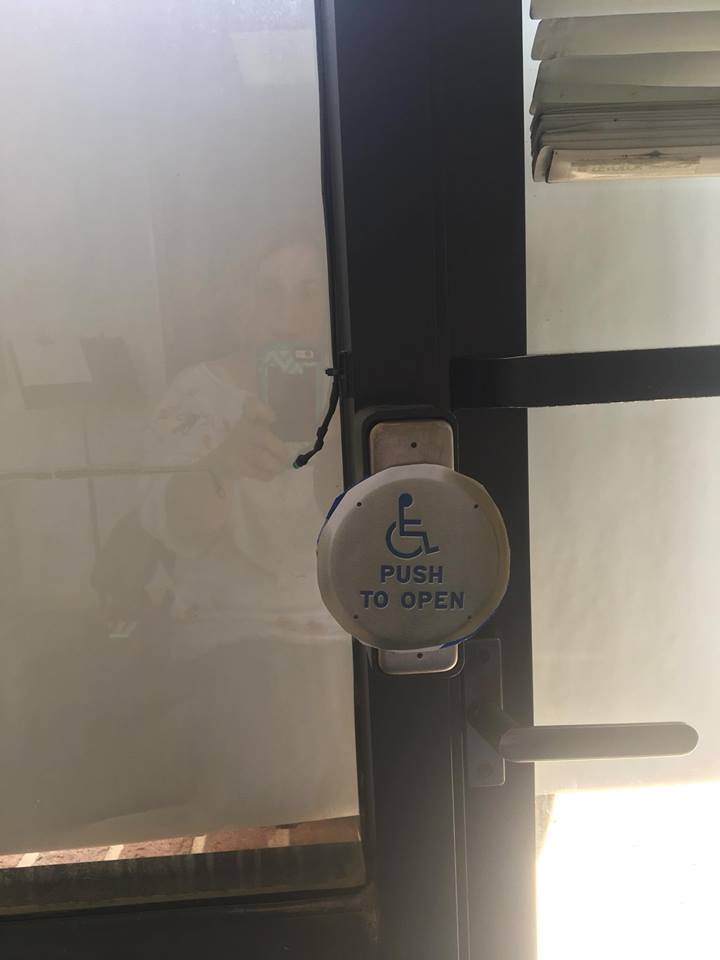
By Laura Hall, MATP Staff
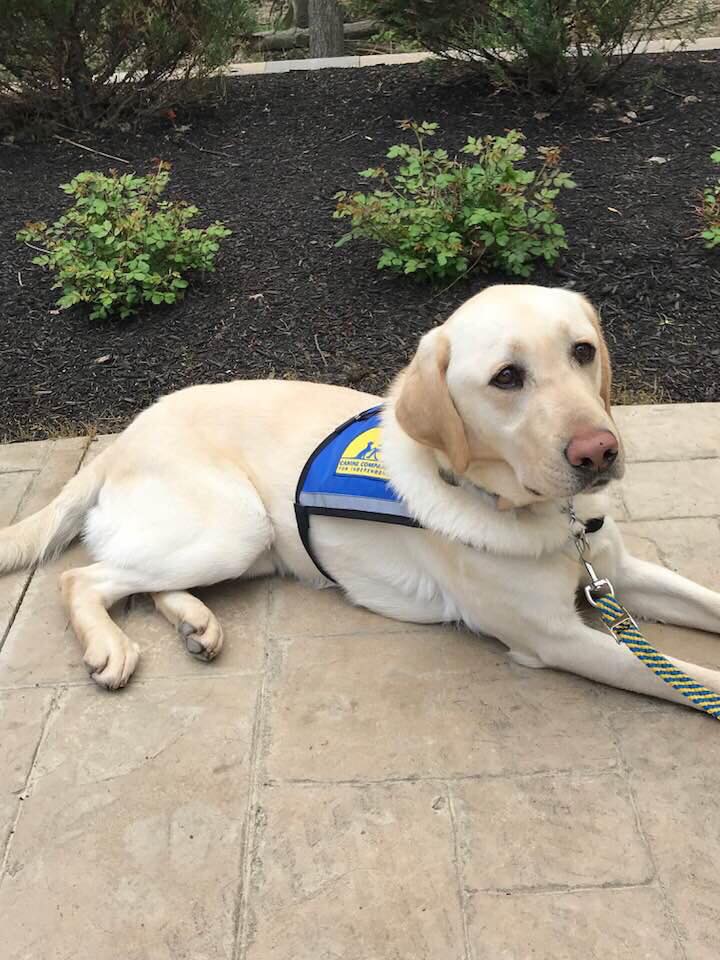 A few weeks ago, I attended a training that was more intense and grueling than any other training I’ve given or received, but the reward was life-changing. For two weeks I attended “Team Training” through Canine Companions for Independence to receive my second service dog. After working with many dogs and learning a litany of commands, I was matched with Adler, a yellow lab/golden retriever cross. Adler, although he is not technically assistive technology, assists me in many ways. For example, he picks up dropped objects, helps get laundry out of the dryer, tugs the basket into my room, turns on light switches, opens doors, and can help me complete retail transactions at high counters, by giving the cashier money, taking the bag and delivering it to me. Having him has already helped me increase my independence greatly, yet, we still rely on assistive technology to help take care of each other.
A few weeks ago, I attended a training that was more intense and grueling than any other training I’ve given or received, but the reward was life-changing. For two weeks I attended “Team Training” through Canine Companions for Independence to receive my second service dog. After working with many dogs and learning a litany of commands, I was matched with Adler, a yellow lab/golden retriever cross. Adler, although he is not technically assistive technology, assists me in many ways. For example, he picks up dropped objects, helps get laundry out of the dryer, tugs the basket into my room, turns on light switches, opens doors, and can help me complete retail transactions at high counters, by giving the cashier money, taking the bag and delivering it to me. Having him has already helped me increase my independence greatly, yet, we still rely on assistive technology to help take care of each other.
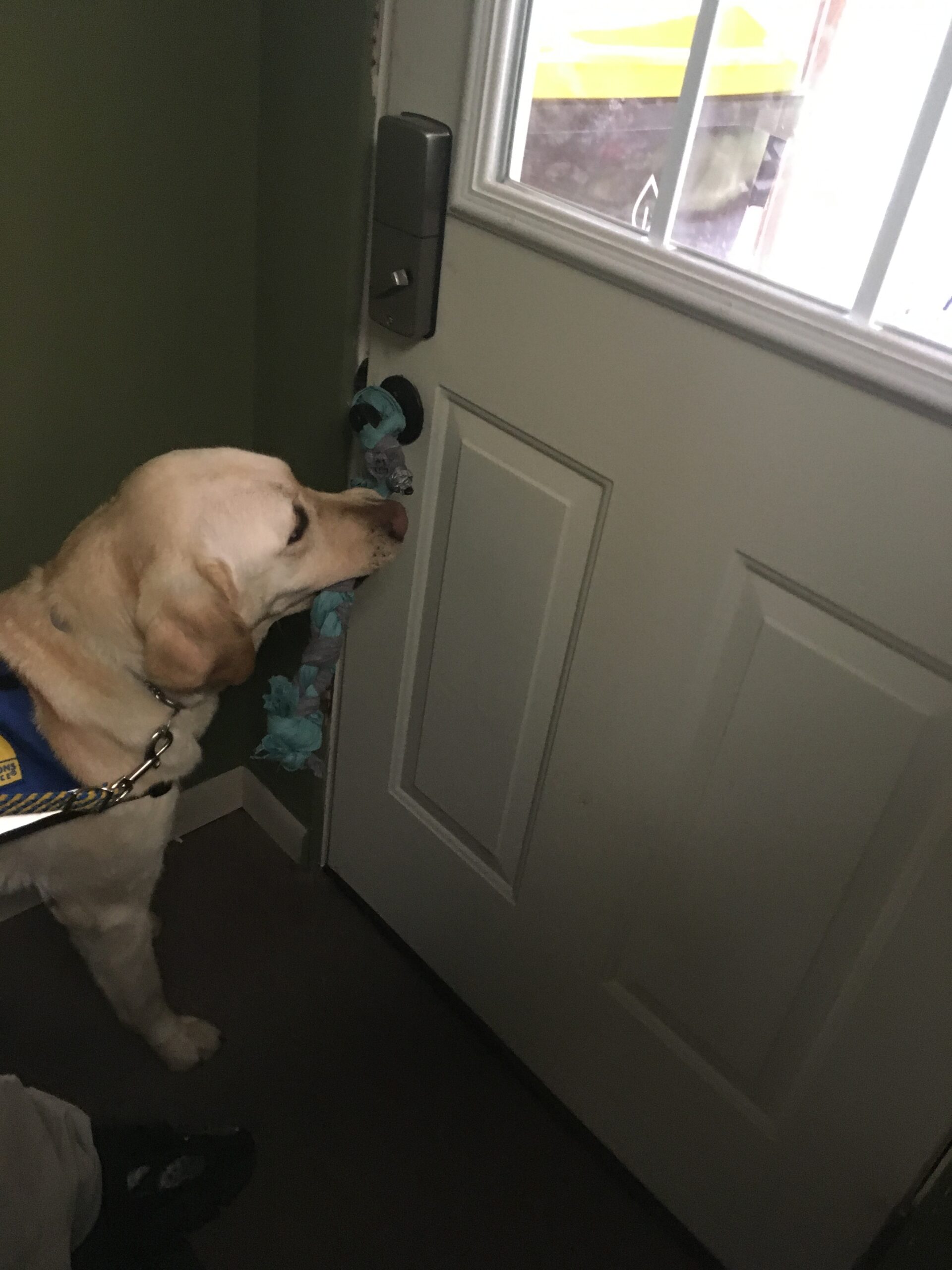 Adler needs a few tools to help him do his job. One of the most important tools he uses is the tug rope. This can be an actual rope or just fabric braided together and knotted at the end. I can tie this to laundry baskets, doors, and drawers so he can tug them open. Upon returning to work, I was surprised that Adler could not find the power door button. When observing his behavior, it looked as though he didn’t know where to target his nose. I realized that he was used to pushing power door buttons that were circular, like the one at the training center. A co-worker had the idea to paste a cardboard cutout of a round button over our rectangular button, and immediately he recognized where he was supposed to push. During the course of the week, we cut the circular cutout smaller and smaller until he was able to target just the rectangular button. I suppose even the smartest of dogs can use some basic, low-tech AT.
Adler needs a few tools to help him do his job. One of the most important tools he uses is the tug rope. This can be an actual rope or just fabric braided together and knotted at the end. I can tie this to laundry baskets, doors, and drawers so he can tug them open. Upon returning to work, I was surprised that Adler could not find the power door button. When observing his behavior, it looked as though he didn’t know where to target his nose. I realized that he was used to pushing power door buttons that were circular, like the one at the training center. A co-worker had the idea to paste a cardboard cutout of a round button over our rectangular button, and immediately he recognized where he was supposed to push. During the course of the week, we cut the circular cutout smaller and smaller until he was able to target just the rectangular button. I suppose even the smartest of dogs can use some basic, low-tech AT.
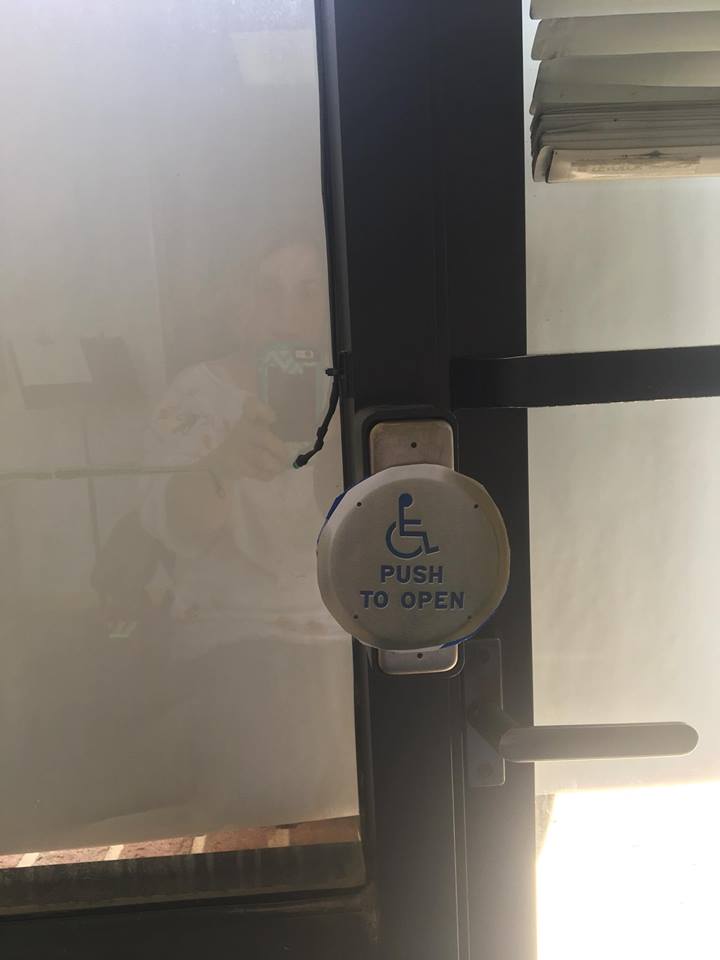
While Adler can do many things, he cannot, unfortunately, feed himself, fully groom himself, or clean up after himself in the yard. This is where assistive technology comes into play for me. Before we even returned home, I purchased an elevated food and water dish, with storage space underneath for the dog food. This allows me to fill his bowls without attempting to reach them on the floor or missing the bowl by pouring from above. Elevated dishes are also better for dogs’ hips, back, and neck, and promote better digestion.
Contrary to popular belief, many dogs, and Adler in particular, love to be kenneled. It provides him with a safe, quiet place to relax and also prevents him from getting in trouble when I have to leave him unsupervised. Finding the right kennel was a challenge. Most wire kennels have a small latch or pinching mechanism that was too difficult for me to manipulate with poor fine motor skills. The best solution I found was a soft crate that zips around the entire door. Sometimes I still have difficulty getting the zipper around the corners at the bottom of the crate, but I am experimenting with various types of zipper pulls to try to problem solve.
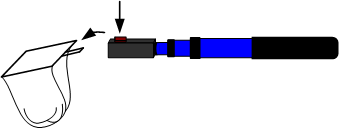 Then, there is the most joyous of dog owner responsibilities, poop scooping. I tried many many different types of scoopers with my first dog, with only a relative amount of success. I was never able to effectively manipulate a rake and dustpan type or a squeezable claw. Even if I did manage to successfully grab the waste, getting the bags off the scooper and into the garbage was another (also unsuccessful) task. This time around, a classmate brought a demonstrated a scooper I had not seen before. The Scooper Genie is a lightweight telescoping scooper with disposable bags constructed with a wire frame which holds them open. It allows you to scoop underneath and from the side, and has a spring-loaded mechanism that enables you to eject it straight into the trash. There is no bending, touching the waste or knot tying involved.
Then, there is the most joyous of dog owner responsibilities, poop scooping. I tried many many different types of scoopers with my first dog, with only a relative amount of success. I was never able to effectively manipulate a rake and dustpan type or a squeezable claw. Even if I did manage to successfully grab the waste, getting the bags off the scooper and into the garbage was another (also unsuccessful) task. This time around, a classmate brought a demonstrated a scooper I had not seen before. The Scooper Genie is a lightweight telescoping scooper with disposable bags constructed with a wire frame which holds them open. It allows you to scoop underneath and from the side, and has a spring-loaded mechanism that enables you to eject it straight into the trash. There is no bending, touching the waste or knot tying involved.
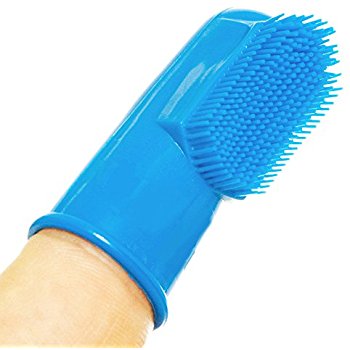 Finally, grooming is an important part of my routine with my service dog. Not only is grooming important for his health, it is important as we continue to build our bond. In training, we learned that physical touch and care is important for trust building and the dog’s sense of safety. In order to do this, I needed to ensure that I could reach Adler and groom his entire body. Currently, I use my shower chair as a grooming bench, but there are grooming tables (which I’m looking into purchasing soon) designed for easier access and reach for bathing, brushing and other routines. Other tools we use in the grooming process include a grooming mitt as opposed to a brush for brushing fur, which is easier to hold, a fingertip toothbrush that allows me to better access his teeth, and enzymatic toothpaste, which has special enzymes that when they come into contact with air forms hydrogen peroxide. Enzymatic toothpaste only needs to come in contact with the dog’s teeth to begin working. This is a benefit for a dog like Adler who prefers to lick the toothpaste rather than have it brushed on (but begrudgingly complies).
Finally, grooming is an important part of my routine with my service dog. Not only is grooming important for his health, it is important as we continue to build our bond. In training, we learned that physical touch and care is important for trust building and the dog’s sense of safety. In order to do this, I needed to ensure that I could reach Adler and groom his entire body. Currently, I use my shower chair as a grooming bench, but there are grooming tables (which I’m looking into purchasing soon) designed for easier access and reach for bathing, brushing and other routines. Other tools we use in the grooming process include a grooming mitt as opposed to a brush for brushing fur, which is easier to hold, a fingertip toothbrush that allows me to better access his teeth, and enzymatic toothpaste, which has special enzymes that when they come into contact with air forms hydrogen peroxide. Enzymatic toothpaste only needs to come in contact with the dog’s teeth to begin working. This is a benefit for a dog like Adler who prefers to lick the toothpaste rather than have it brushed on (but begrudgingly complies).
I’m sure that I will discover other AT that will help Adler and I as we continue to grow as a team, and I am looking forward to our long working and loving relationship. For more information on AT and our furry friends (including cats!), check out our archived webinar, “Devices to Help With Pet Care”
